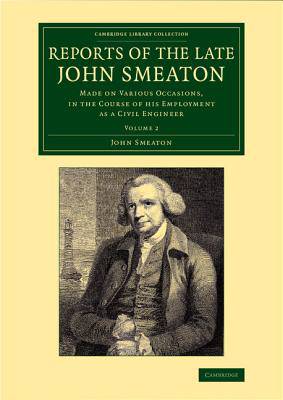
- Afhalen na 1 uur in een winkel met voorraad
- Gratis thuislevering in België vanaf € 30
- Ruim aanbod met 7 miljoen producten
- Afhalen na 1 uur in een winkel met voorraad
- Gratis thuislevering in België vanaf € 30
- Ruim aanbod met 7 miljoen producten
Zoeken
Reports of the Late John Smeaton
Made on Various Occasions, in the Course of His Employment as a Civil Engineer
John Smeaton
€ 127,45
+ 254 punten
Uitvoering
Omschrijving
Celebrated for his construction of the Eddystone Lighthouse near Plymouth, John Smeaton (1724-92) established himself as Britain's foremost civil engineer in the eighteenth century. A founder member of the Society of Civil Engineers, he was instrumental in promoting the growth of the profession. After his death his papers were acquired by the president of the Royal Society, Sir Joseph Banks, Smeaton's friend and patron. Using these materials, a special committee decided to publish 'every paper of any consequence' written by Smeaton, as a 'fund of practical instruction' for current and future engineers. These were published in four illustrated volumes between 1812 and 1814. Volume 2 contains Smeaton's reports on engineering works for bridges, including a proposal for the widening and improvement of London Bridge, as well as many plans for the creation or improvement of canals, mills and waterwheels.
Specificaties
Betrokkenen
- Auteur(s):
- Uitgeverij:
Inhoud
- Aantal bladzijden:
- 494
- Taal:
- Engels
- Reeks:
Eigenschappen
- Productcode (EAN):
- 9781108069786
- Verschijningsdatum:
- 11/09/2014
- Uitvoering:
- Paperback
- Formaat:
- Trade paperback (VS)
- Afmetingen:
- 210 mm x 297 mm
- Gewicht:
- 1170 g

Alleen bij Standaard Boekhandel
+ 254 punten op je klantenkaart van Standaard Boekhandel
Beoordelingen
We publiceren alleen reviews die voldoen aan de voorwaarden voor reviews. Bekijk onze voorwaarden voor reviews.








